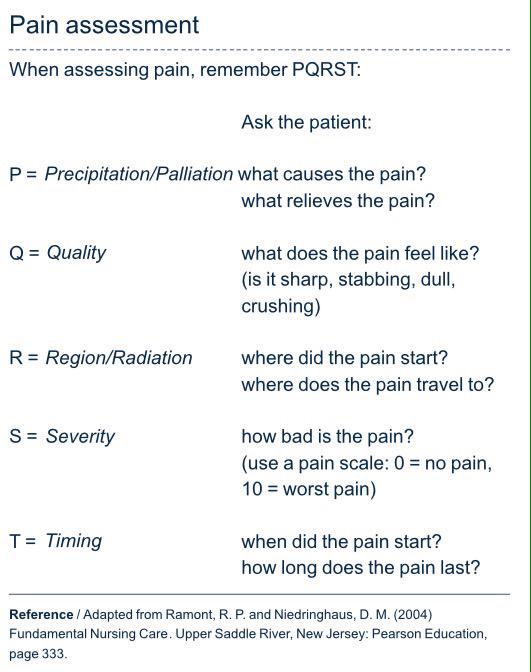Understanding Pain: The PQRST Assessment Explained

Pain is a universal experience, yet understanding its nuances can be complex. Whether you’re a healthcare professional or someone dealing with pain, the PQRST assessment is a valuable tool to evaluate and communicate pain effectively. This method breaks down pain into manageable components, making it easier to diagnose and treat. Let’s dive into what the PQRST assessment is and how it can help you better understand pain.
What is the PQRST Assessment?

The PQRST assessment is a structured approach used to evaluate pain. It stands for:
- P - Provocation/Palliative: What causes or relieves the pain?
- Q - Quality: What does the pain feel like?
- R - Region/Radiation: Where is the pain located, and does it spread?
- S - Severity: How intense is the pain?
- T - Time: When did the pain start, and how long does it last?
This method is widely used in medical settings to gather detailed information about a patient’s pain, ensuring accurate diagnosis and treatment.
Breaking Down the PQRST Assessment

Provocation/Palliative (P)
Understanding what triggers or alleviates pain is crucial. For example, does movement worsen the pain? Does resting relieve it? Identifying these factors helps in pinpointing the underlying cause.
Quality (Q)
Describing the nature of the pain provides insight into its origin. Is it sharp, dull, burning, or throbbing? Each description can indicate different types of pain, such as nerve pain or muscle strain.
Region/Radiation ®
Locating the pain and determining if it spreads is essential. For instance, pain originating in the back that radiates to the leg could suggest a herniated disc.
Severity (S)
Measuring pain intensity on a scale (e.g., 1-10) helps assess its impact on daily life. This information guides treatment decisions and monitors progress.
Time (T)
Knowing when the pain started and its duration aids in diagnosing conditions. Acute pain might indicate an injury, while chronic pain could signal an ongoing issue.
📌 Note: The PQRST assessment is a patient-centered tool, meaning the individual’s description is key to its effectiveness.
Why Use the PQRST Assessment?

The PQRST assessment is invaluable for both patients and healthcare providers. It ensures a comprehensive understanding of pain, leading to more accurate diagnoses and tailored treatment plans. For patients, it provides a structured way to communicate their symptoms, reducing frustration and improving care.
How to Apply the PQRST Assessment

Whether you’re a patient or a caregiver, here’s a simple checklist to apply the PQRST assessment:
- Provocation/Palliative: Note activities or conditions that worsen or relieve the pain.
- Quality: Describe the pain’s characteristics (e.g., sharp, dull).
- Region/Radiation: Identify the pain’s location and if it spreads.
- Severity: Rate the pain intensity on a scale of 1-10.
- Time: Record when the pain started and its duration.
Wrapping Up

The PQRST assessment is a powerful tool for understanding and managing pain. By breaking down pain into its components, it facilitates better communication and more effective treatment. Whether you’re dealing with acute or chronic pain, this method can help you or your healthcare provider address the issue more precisely.
What is the PQRST assessment used for?
+The PQRST assessment is used to evaluate pain by examining its provocation, quality, region, severity, and timing. It helps healthcare providers diagnose and treat pain effectively.
Who can use the PQRST assessment?
+Both patients and healthcare providers can use the PQRST assessment. Patients can use it to describe their pain, while providers use it to gather detailed information for diagnosis.
Is the PQRST assessment suitable for all types of pain?
+Yes, the PQRST assessment is versatile and can be applied to acute, chronic, or intermittent pain, making it a valuable tool for various pain management scenarios.
pain assessment,pain management,chronic pain,acute pain,PQRST method


